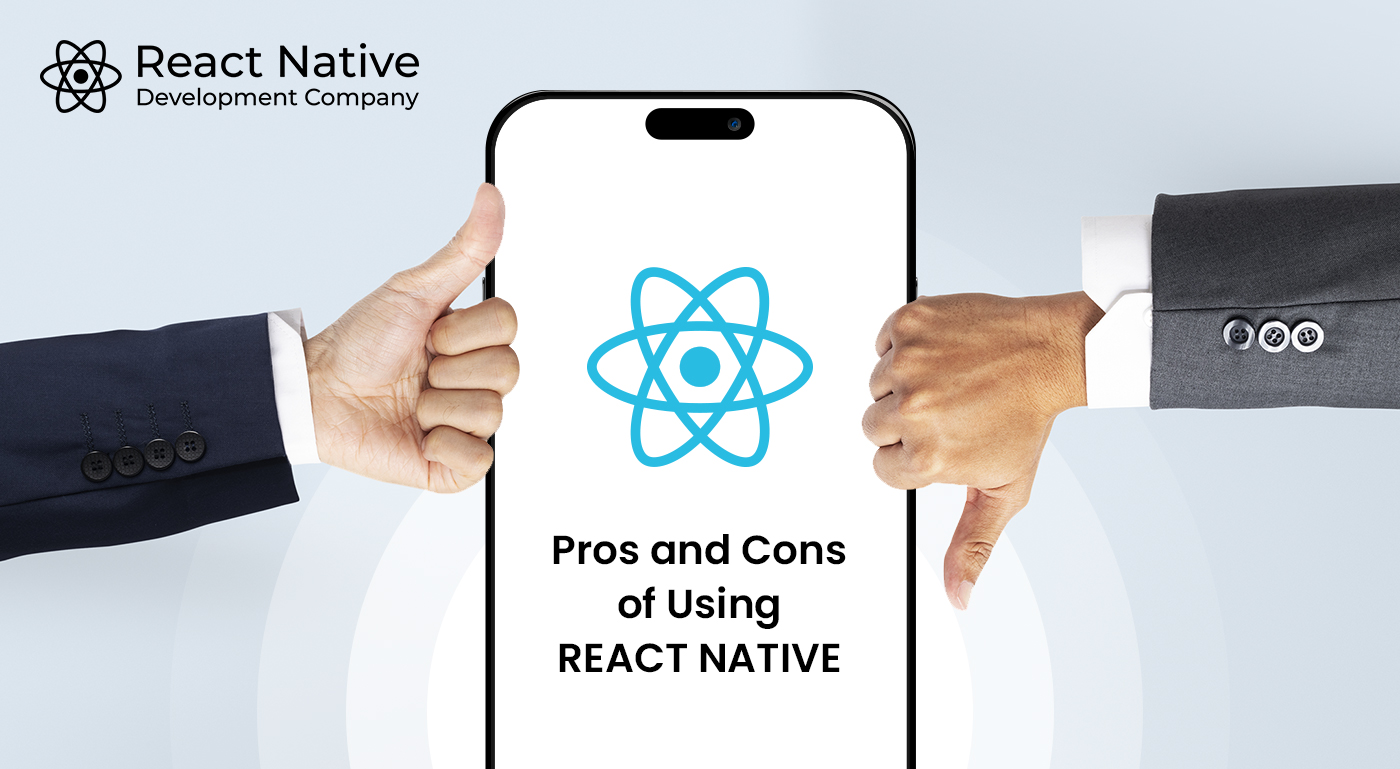
Exploring the Pros and Cons of Using React Native for Cross-Platform App Creation
In today’s fast-paced world, mobile app development is at the forefront of technology innovation. With a plethora of platforms and devices available, developers often find themselves in a dilemma when choosing the right framework to build their apps. React Native has emerged as a popular choice for cross-platform app development, and for good reason. In this comprehensive guide, we’ll explore the pros and cons of using React Native, shedding light on its advantages and limitations to help you make an informed decision for your next app project.
Pros of Using React Native
1. Reusable Codebase
One of the standout advantages of React Native is its ability to share a single codebase between iOS and Android platforms. Developers can write code once and deploy it across multiple platforms, reducing development time and effort significantly. This not only saves time but also ensures consistency in the app’s functionality and design across different devices.
2. Cost-Effective Development
With React Native, businesses can save a substantial amount of money on app development. Since a single development team can work on both iOS and Android versions of the app, you can cut down on labor costs. This makes React Native an attractive option for startups and small businesses looking to enter the mobile app market without breaking the bank.
3. Fast Development
React Native offers a “hot-reloading” feature that allows developers to instantly see the changes they make to the code without rebuilding the entire app. This feature speeds up the development process, making it easier to iterate and refine the app quickly. Developers can also take advantage of a vast collection of pre-built components and libraries available in the React Native ecosystem, further accelerating development.
4. Native Performance
While React Native apps are primarily built using JavaScript, they are not mere web apps wrapped in a native shell. React Native compiles code to native modules, ensuring that your app performs at a level close to that of a fully native app. This results in smooth animations, faster load times, and a responsive user interface, providing a high-quality user experience.
5. Large and Active Community
React Native has garnered a massive and active community of developers, which means that you’ll have access to a wealth of resources, documentation, and open-source libraries. This community-driven ecosystem fosters innovation and provides solutions to common development challenges, making it easier to tackle complex app projects.
6. Live Updates
React Native’s “Over-the-Air” (OTA) updates feature enables developers to push updates directly to users’ devices without going through the app stores’ approval processes. This is particularly beneficial for addressing critical bug fixes or rolling out new features quickly, enhancing the user experience and saving time on app updates.
Cons of Using React Native
1. Limited Access to Native Features
While React Native provides access to many native modules and libraries, there may be situations where you require access to a specific native feature that is not readily available in the React Native ecosystem. In such cases, you may need to write custom native modules, which can be time-consuming and may require expertise in native development languages.
2. Performance Variability
While React Native apps generally offer good performance, there can be performance variations between different devices and operating system versions. Achieving consistent performance across all devices can be challenging, and optimizing the app for specific devices may be necessary in some cases.
3. Larger App Size
React Native apps tend to have larger file sizes compared to fully native apps. This might pose an issue for individuals who have restricted storage capacity on their devices. However, this drawback can be mitigated through careful optimization and minimizing unnecessary dependencies.
4. Learning Curve
Although React Native is based on JavaScript, developers who are new to the framework may face a learning curve, especially if they are not familiar with React, the JavaScript library upon which React Native is built. Additionally, mastering the nuances of working with native modules and debugging can take time.
5. Limited Customization
While React Native provides a wide range of pre-built components and libraries, there may be cases where you require highly customized UI components or animations. Achieving such customization may require more effort and expertise in React Native, potentially slowing down development.
6. Frequent Updates and Breaking Changes
React Native is an actively developed framework, which means that it receives frequent updates and improvements. While this is generally a good thing, it can also pose challenges, as updates may introduce breaking changes that require developers to adapt their code. Staying up to date with the latest version of React Native and its ecosystem can be a continuous effort.
Comparing the Advantages and Disadvantages of React Native and React.
It’s worth clarifying the difference between React Native and React. React serves as a JavaScript library primarily designed for constructing user interfaces in web applications, whereas React Native is a dedicated framework tailored for crafting native mobile applications. The key distinction is that React Native is focused on mobile app development, while React is geared towards web development.
Pros of React (for web development):
- Powerful for building web user interfaces.
- Extensive community and ecosystem for web applications.
- Well-suited for building complex web applications.
Cons of React (for mobile app development):
- Not designed for native mobile app development.
- Limited access to native mobile features.
- Different tooling and workflow compared to React Native.
React Native Limitations
While React Native offers numerous benefits, it’s important to be aware of its limitations:
- Not Ideal for Graphics-Intensive Apps: React Native may not be the best choice for apps that heavily rely on complex graphics and animations, as achieving native-level performance in such cases can be challenging.
- Steep Learning Curve for Native Modules: Developing custom native modules in React Native can be complex, especially if you are not familiar with native development languages like Objective‑C or Java.
- Dependence on Third-Party Libraries: Relying on third-party libraries can introduce potential compatibility issues and require maintenance over time, so it’s crucial to choose libraries carefully and ensure they are well-maintained.
- Lack of Support for Some OS Features: React Native may not provide immediate support for the latest features introduced in iOS and Android, so developers may need to wait for updates or implement custom solutions.
- Security Concerns: While React Native is generally secure, the use of third-party plugins and libraries can introduce security vulnerabilities if not vetted and managed properly.
Conclusion
In the realm of cross-platform app development, React Native has established itself as a powerful and efficient framework. Its ability to streamline development, reduce costs, and provide a native-like experience makes it an attractive choice for many projects. However, it’s essential to weigh the pros and cons carefully and consider the specific requirements of your app before making a decision.
Ultimately, React Native is a valuable tool in the developer’s toolkit, but it may not be the best fit for every project. By understanding its strengths and limitations, you can make an informed choice that aligns with your development goals and delivers the best possible user experience for your target audience.
Frequently Asked Questions
React Native is an open-source JavaScript framework developed by Facebook for building cross-platform mobile applications. It allows developers to use a single codebase to create apps for both iOS and Android platforms, using components that render natively.
React Native offers several benefits, including faster development, cost-effectiveness, a large developer community, and the ability to share code between platforms, resulting in reduced development time and effort.
Some limitations of React Native include performance issues in complex apps, occasional compatibility issues with third-party libraries, and the need to write platform-specific code for certain features.
Some well-known apps developed with React Native include Facebook, Instagram, Airbnb, and UberEats, demonstrating the framework's capabilities for building large-scale applications.
React Native, Flutter, and Xamarin are all viable options for cross-platform app development. The choice depends on factors like the development team's familiarity with the framework, project requirements, and desired user experience.


